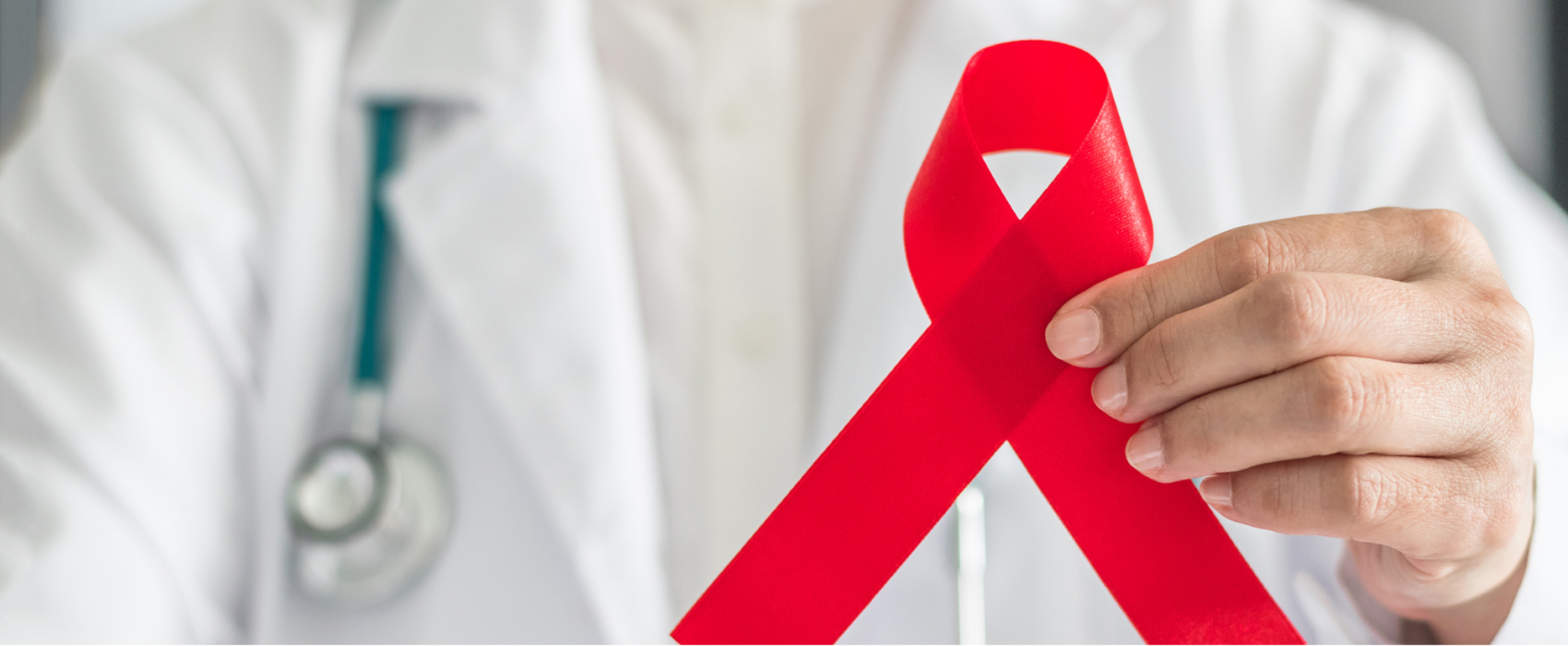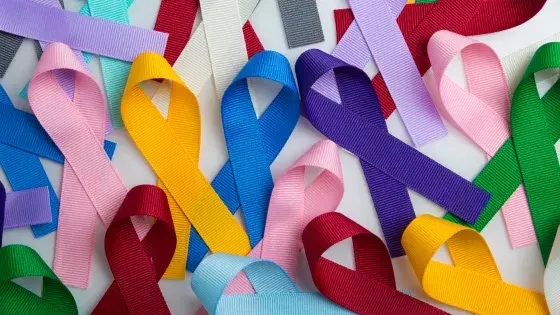Every year on December 1st, the world commemorates World AIDS Day. People around the world unite to show support for people living with and affected by HIV and to remember those who lost their lives to AIDS.
Despite significant progress in the fight against HIV/AIDS, there are still over 38 million people living with HIV or AIDS worldwide. It’s estimated that around 107,000 people in the UK are living with HIV, with c.3000 newly diagnosed in 2021 – just under 1 in every 600 people. Of these, around 5,000 are undiagnosed.
What is HIV and AIDS?
HIV (human immunodeficiency virus) is a virus that damages the cells in the immune system and weakens a person’s ability to fight everyday infections and disease. HIV can be transmitted from one person to another through bodily fluids. This includes semen, vaginal and anal fluid and blood.
AIDS (acquired immune deficiency syndrome) is the name used to describe a number of potentially life-threatening infections and illnesses that happen when your immune system has been severely damaged by the HIV virus.
While AIDS cannot be transmitted from 1 person to another, the HIV virus can.
There's currently no cure for HIV, but there are very effective drug treatments that enable most people with the virus to live a long and healthy life. With an early diagnosis and effective treatments, most people with HIV will not develop any AIDS-related illnesses and will live a near-normal lifespan.
Symptoms of HIV infection
Most people experience a short flu-like illness 2 to 6 weeks after HIV infection, which lasts for a week or 2.
After these symptoms disappear, HIV may not cause any symptoms for many years, although the virus continues to damage your immune system.
This means many people with HIV do not know they're infected. Anyone who thinks they could have HIV should get tested.
Causes of HIV infection
HIV is found in the body fluids of an infected person. This includes semen, vaginal and anal fluids, blood and breast milk. HIV cannot be transmitted through sweat, urine or saliva.
The most common way of getting HIV in the UK is through having anal or vaginal sex without a condom.
Other ways of getting HIV include:
- sharing needles, syringes or other injecting equipment
- transmission from mother to baby during pregnancy, birth or breastfeeding
The chance of getting HIV through oral sex is very low and will be dependent on many things, such as whether you receive or give oral sex and the oral hygiene of the person giving the oral sex.
Diagnoses and Treatment
Seek medical advice as soon as possible if you think you might have been exposed to HIV.
The only way to find out if you have HIV is to have an HIV test. This involves testing a sample of your blood or saliva for signs of the infection. You can get tested in a number of places, including at a GP surgery, sexual health clinics and clinics run by charities.
Antiretroviral medicines are used to treat HIV. They work by stopping the virus replicating in the body, allowing the immune system to repair itself and preventing further damage.
Preventing HIV
Anyone who has sex without a condom or shares needles is at risk of HIV infection.
There are many effective ways to prevent or reduce the risk of HIV infection, including:
- using a condom for sex.
- post-exposure prophylaxis medicine (emergency anti-HIV medicine).
- pre-exposure prophylaxis medicine (PrEP) – works by stopping HIV from getting into your body and making copies of itself (replicating).
- treatment for HIV to reduce the viral load to undetectable.
- if you use drugs, never sharing needles or other injecting equipment, including syringes, spoons and swabs.
If a person has been taking effective HIV treatment and their viral load has been undetectable for 6 months or more, they cannot pass the virus on through sex.
Resources:

